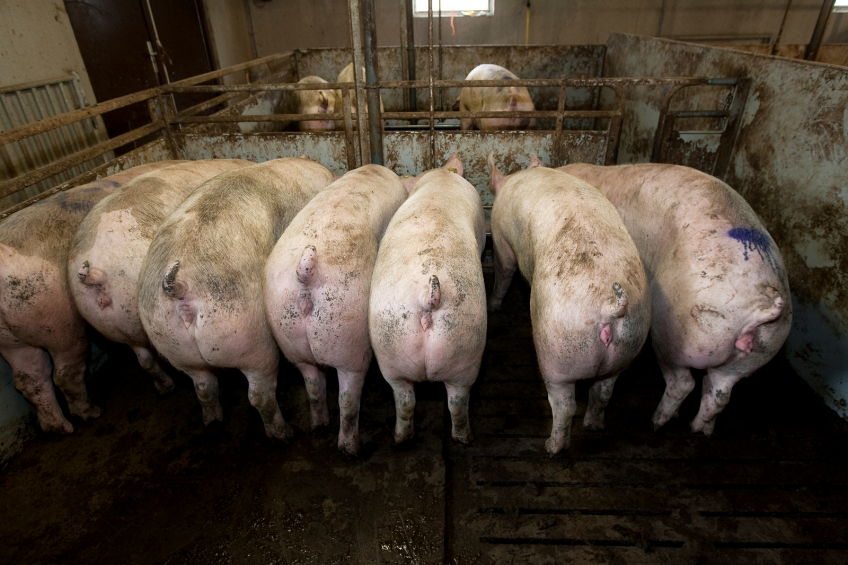Smaller ground corn offers pigs better nutritional value

Current recommendations for feeding corn to pigs state that the grain should be milled to an average particle size of 640–650 µm. However, results of research at the University of Illinois indicate that milling to a smaller particle size may increase the digestibility of starch and energy in corn, and therefore, improve the nutritional value of corn.
“Feed ground to a smaller particle size has more surface area than coarser ground feed, which provides more access for digestive enzymes to work,” said Dr. Hans H. Stein, professor of animal sciences at Illinois. “Therefore, we would expect nutrients in finely-ground feed to be better digested by pigs than nutrients in coarsely-ground feed.”
Nutrient and energy digestibility
Stein, along with former graduate student Oscar Rojas, conducted two studies to determine the effect of particle size on nutrient and energy digestibility. They fed corn that had been ground to an average particle size of 865, 677, 485, and 339 μm, respectively, to growing pigs.
As the particle size of corn decreased, the digestibility of starch increased, from 89% in corn ground to 865 μm to 96.6% in corn ground to 339 μm.
“Starch is the main form of energy storage in grains, so improved starch digestibility is expected to result in greater energy digestibility,” said Stein.
Hypothesis confirmed
True to the researchers’ hypothesis, the digestibility of gross energy in corn increased as particle size decreased, from 88.7% in the coarsest corn to 91.6% in the corn with the smallest particle size. Corn ground to 865 μm contained 3,932 kcal digestible energy and 3,826 kcal metabolizable energy per kg dry matter, compared with 4,097 and 3,964 kcal per kg dry matter in corn ground to 339 μm.
Decreasing particle size did not make all nutrients more digestible, however. Rojas and Stein observed that particle size did not affect the digestibility of crude protein, amino acids, or phosphorus. According to Stein, the results indicated that the optimal particle size for corn may be smaller than what is currently recommended.
Problems with smaller particles
“There are issues to consider when feeding ingredients ground to a very small particle size. There can be flowability problems in feeders, and there may be an increased risk of pigs developing gastric ulcers. However, these problems may be offset by the increase in feed value. The results from this research give producers more information with which they can make that decision.”
The research was supported by funding from the National Pork Board, Des Moines, IA, and the corn used in this research was donated by Pioneer Hi-Bred, Johnston, IA.
The research text in full can be found here.
Join 18,000+ subscribers
Subscribe to our newsletter to stay updated about all the need-to-know content in the pigsector, three times a week. Beheer
Beheer










 WP Admin
WP Admin  Bewerk bericht
Bewerk bericht